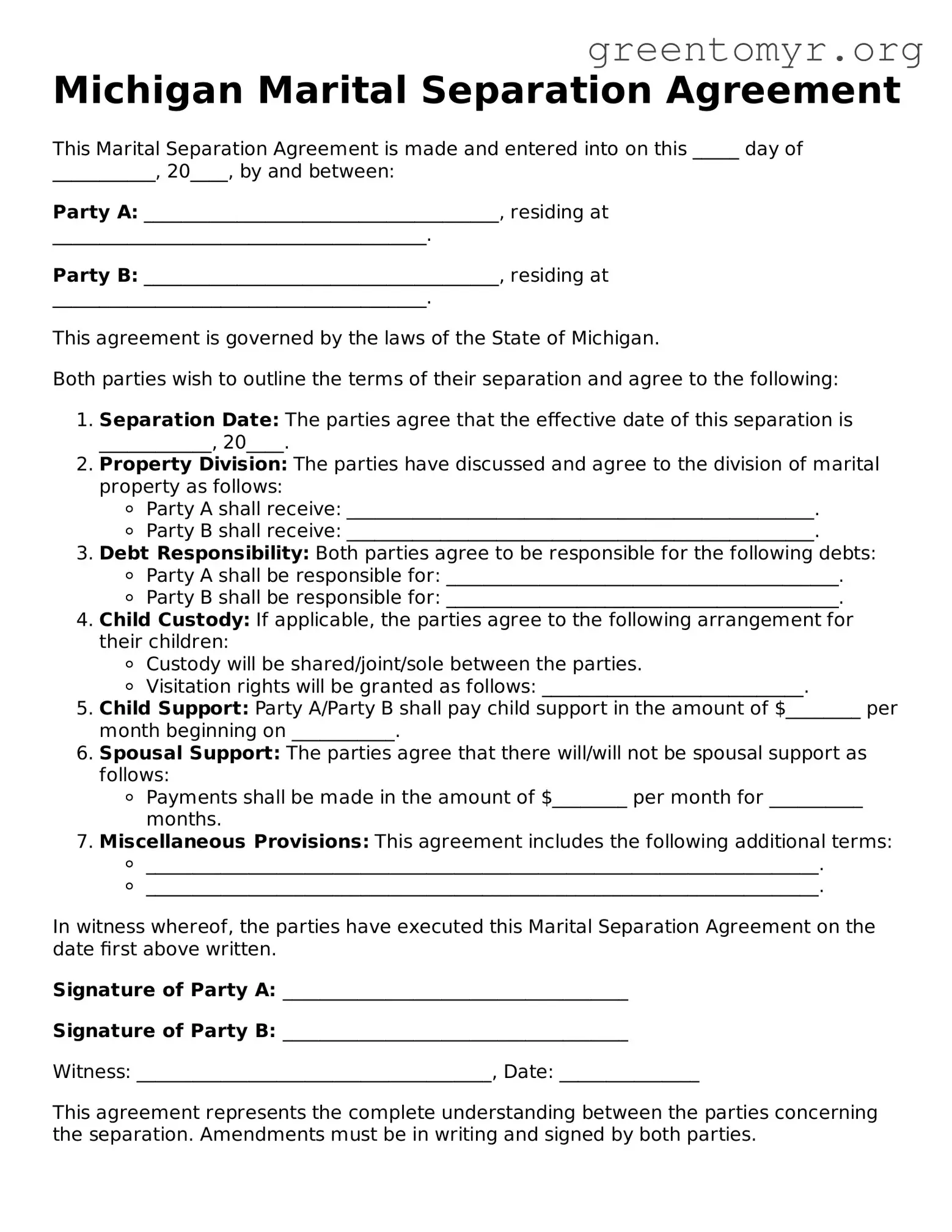Michigan Marital Separation Agreement
This Marital Separation Agreement is made and entered into on this _____ day of ___________, 20____, by and between:
Party A: ______________________________________, residing at ________________________________________.
Party B: ______________________________________, residing at ________________________________________.
This agreement is governed by the laws of the State of Michigan.
Both parties wish to outline the terms of their separation and agree to the following:
- Separation Date: The parties agree that the effective date of this separation is ____________, 20____.
- Property Division: The parties have discussed and agree to the division of marital property as follows:
- Party A shall receive: __________________________________________________.
- Party B shall receive: __________________________________________________.
- Debt Responsibility: Both parties agree to be responsible for the following debts:
- Party A shall be responsible for: __________________________________________.
- Party B shall be responsible for: __________________________________________.
- Child Custody: If applicable, the parties agree to the following arrangement for their children:
- Custody will be shared/joint/sole between the parties.
- Visitation rights will be granted as follows: ____________________________.
- Child Support: Party A/Party B shall pay child support in the amount of $________ per month beginning on ___________.
- Spousal Support: The parties agree that there will/will not be spousal support as follows:
- Payments shall be made in the amount of $________ per month for __________ months.
- Miscellaneous Provisions: This agreement includes the following additional terms:
- ________________________________________________________________________.
- ________________________________________________________________________.
In witness whereof, the parties have executed this Marital Separation Agreement on the date first above written.
Signature of Party A: _____________________________________
Signature of Party B: _____________________________________
Witness: ______________________________________, Date: _______________
This agreement represents the complete understanding between the parties concerning the separation. Amendments must be in writing and signed by both parties.
